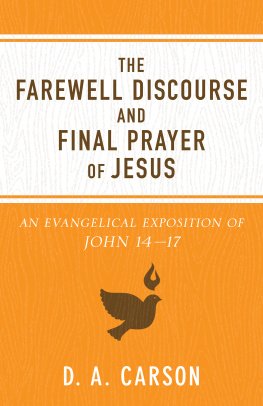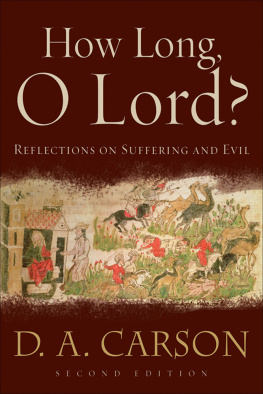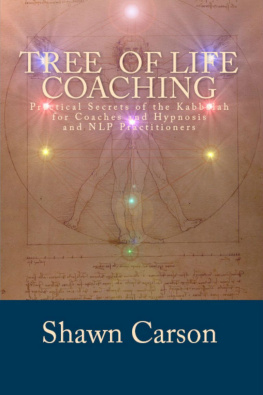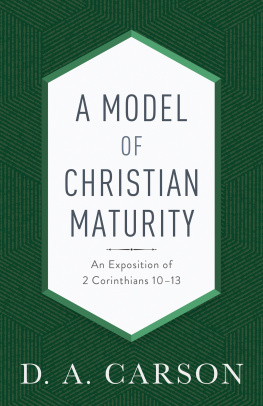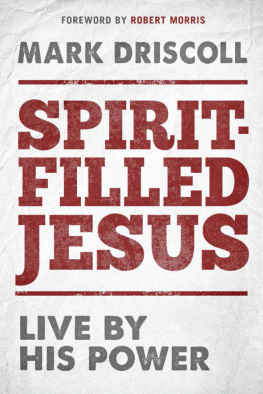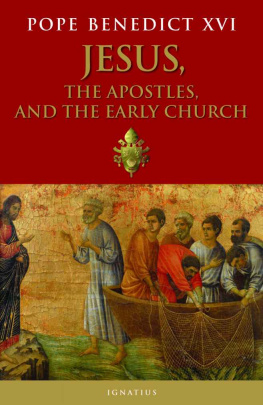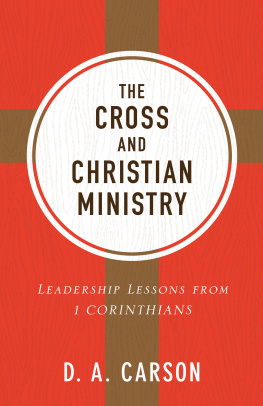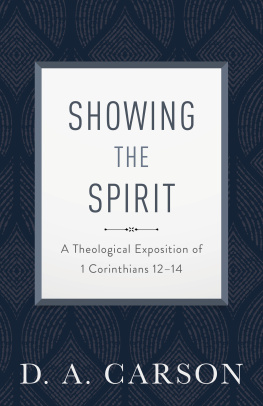F OR THE LAST EIGHT YEARS I have spent more time studying the Gospel of John than any other part of the Scripture. This has proved to be a lesson in humility. John is simple enough for a child to read and complex enough to tax the mental powers of the greatest minds. As one commentator has put it, this book is like a pool in which a child may wade and an elephant may swim. I am not an elephant; but I have become aware of the many places where I am beyond my depth.
Up to now, what I have written on this Gospel was prepared for the well-trained minister or serious student, and is available only in journals or in books not likely to be read by the general reader. I am more and more convinced, however, that those of us who by the grace of God have been privileged to spend much time studying the Scriptures owe the fruit of our labors not only to the scholarly community but also to the church at large. A need exists for both academic and popular approaches; but this volume belongs to the latter camp. It grew out of a series of addresses given at several conferences in Canada and the United States. These have been worked over and rewritten as essays, a form more congenial to the printed page than is a sermon; but I have purposely refrained from obliterating all traces of the earlier form.
It is common in the scholarly community to assert that the historical Jesus was responsible for very little of the teaching recorded in John 1417. It will quickly become obvious that I am not so skeptical. With some hesitation I have refrained from adding an appendix to explain my approach to historical-critical questions (as I did in The Sermon on the Mount: An Evangelical Exposition of Matthew 57 , also published by Baker); and only rarely have I alluded to questions of authenticity in the course of the exposition. Those interested in knowing how I would approach such problems may read Current Source Criticism of the Fourth Gospel: Some Methodological Questions, in Journal of Biblical Literature 97 (1978): 41129, and Historical Tradition in the Fourth Gospel: After Dodd, What? in Gospel Perspectives , vol. 2, ed. D. Wenham (1981).
Renae Grams and Karen Sich prepared the typescript with their characteristic accuracy, efficiency, and cheerfulness; and I am very grateful.
I pray that these short studies will be as spiritually profitable to those who read them as they have been to me as I prepared them. But above all, I pray that this volume will encourage many to return again and again to the Scriptures themselves. Whatever helps us better understand, obey, and believe the Word of God contributes to our eternal well-being; but the ultimate source of that well-being is God alone.
Soli Deo gloria.
D. A. Carson
Trinity Evangelical Divinity SchoolDeerfield, IllinoisFebruary 1980
1
Prologue
John 13
T HE ATMOSPHERE in the large upstairs room was tense, unhappy, uncertain.
The evening had gone badly from the start. The disciples had gathered with Jesus, as arranged, and climbed to the upstairs room where the food was already prepared. They looked around for the traditional servant to wash their feet; but seeing no one, and being too polite to mention it, they stretched out on their pallets around the low eating table without saying a word. Jesus offered the traditional prayer of thanksgiving; and then they noticed that Jesus was pushing himself off his pallet. The talk was stilled. The Master quietly took off his cloak. To their utter consternation, he went over to the washstand, wrapped the towel around his waist, picked up the large basin of water, and headed for the nearest disciple.
Teachers shouldnt do things like that. Not even equals should wash one anothers feet: it is a job for servantsand the servants with least seniority, at that. The first disciple, too surprised to move, too embarrassed to protest, felt his sandals being slipped off, and then the cool water and the dry towel. The Master proceeded to the second disciple, and to the third; all the while the silence was deafening.
Typically, it was Simon Peter who broke the silence. As Jesus approached to wash his feet, Peter curled up his legs and pointed out the inappropriateness of the Masters action with what he thought was a tactful question: Lord, are you going to wash my feet?
Jesus straightened his back, looked him straight in the eye, and replied quietly, You do not realize now what I am doing, but later you will understand.
Peters voice hardened; someone had to speak out. If the Master could not see that he was demeaning himself, Peter would have to tell him. No, he said, you will never wash my feet.
Still Jesus looked at him with that unwavering gaze. Unless I wash you, he said, you have no part with me.
Open confrontation. For a moment the still air was charged with suspense. Did Jesus not recognize that Peter was speaking out of love? But faced with a response like that, Peter was now slow in rising to the occasion. He decided to take advantage of the situation and declare his love in a different way, Then, Lord, he replied, not just my feet but my hands and my head as well.
That might have relieved the tension; but then Jesus added something more, something that, at the time, was highly enigmatic and restored the gloomy foreboding in the room. He said, A person who has had a bath needs only to wash his feet; his whole body is clean. And, he added, looking around the room, you are clean, though not every one of you. And in the utter silence that followed, he finished washing their feet.
The disciples watched Jesus wipe his hands, don his cloak, and return to his pallet. Unable to look at each other, embarrassed both for themselves and for their Teacher, they were quietly grateful that the episode was over. And then all of a sudden it was not; for Jesus began speaking again.
Do you understand what I have done for you? he asked.
They understood well enough; he had washed their feet. But then they began to see that he expected a deeper answer than that. What Jesus had done for them was to provide a model; and as this truth slowly dawned on them, drawn out by the quiet question, they found their groping answers confirmed as Jesus responded to his own question.

